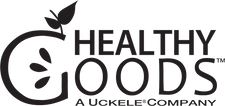If you live in the United States, you eat genetically-modified food (GMOs) and don’t know it.
The United States and Canada do not require labeling of genetically engineered foods. On the other hand, 50 other countries have significant restrictions or outright bans on GMOs. In regard to food labeling, 61 countries already label genetically engineered foods, including the entire European Union (EU). Even China labels genetically engineered foods! What do these countries know that we don’t?
The United States and the EU have very different policies that regulate biotechnology. From the 1960s through the mid-1980s, the regulation of health, safety and environmental risks were generally stricter in the United States than in Europe. Since the mid-1980s, the opposite has often been the case and since the inception of GMOs, it seems Europeans were more concerned about them than Americans were. A wide variety of European consumer and environmental regulations, including those overseeing GMOs, are now more restrictive than in the United States.
A survey conducted on consumers in 1995 reported only 21% of American consumers regarded genetic engineering as a "serious health hazard." By contrast, the comparable figure was 85% in Sweden, 60% in Austria, 57% in Germany, 48% in the Netherlands, 39% in the United Kingdom, and 38% in France. Fast forward to the late 1990’s, another survey showed only 14% of Americans regarded genetic modification as a serious risk in food products. Americans only became less concerned! On the other hand, Europe went down the opposite path regarding GMOs due to strong consumer advocacy and some high level politicians who were skeptical of biotechnology. Thus, the first GM labeling requirements for food products in the EU were introduced in 1997!
What are Europe's GMO labeling requirements?
In the EU, if a food contains or consists of genetically-modified organisms, or contains ingredients produced from GMOs, specific information must be indicated on the label.
For pre-packaged products consisting of, or containing GMOs, these words must appear on the label: “This product contains genetically modified organisms” or “This product contains genetically modified [name of organism(s)]”.
Here are a couple examples:
For non-pre-packaged products offered to the consumer these words need to appear on, or in connection with, the display of the product: “This product contains genetically modified organisms” or “This product contains genetically modified [name of organism(s)]”.
More about EU labeling laws for GMOs:
- On April 18, 2004, new rules for GM labeling came into force in all EU Member States.
- The GM Food and Feed Regulation lays down rules to cover all GM food and animal feed, regardless of the presence of any GM material in the final product. This means products such as flour, oils and glucose syrups have to be labeled as GM if they are from a GM source.
- Products produced with GM technology (cheese produced with GM enzymes, for example) do not have to be labeled
- Products such as meat, milk and eggs from animals fed on GM animal feed also do not need to be labeled. Details on the labeling rules can be found in this table.
Although America's voice against GMOs is getting louder, our regulatory policies are still strikingly different from the EU’s. If you want to know whether or not genetically-modified ingredients are in the food you eat, please make yourself heard. The United States’ mandatory labeling effort is called “Right to Know,” and it has gained significant momentum over the past several years, but has a long way to go! For more information about this effort, visit: http://www.nongmoproject.org/take-action/mandatory-labeling/
In Health and Happiness,
Kelly Harrington, MS, RDN
Registered Dietitian Nutritionist for Live Superfoods
References:
Tomas Hoban, "Consumer Acceptance of Biotechnology: An International Perspective," Nature Biotechnology March, 1997: 233.
T. Ayers, "A Tomato by Any Other Name? U.S. and EC Grapple with Labeling," Science, July 30, 1998: 714.
Food Standards Agency. GM labelling.

